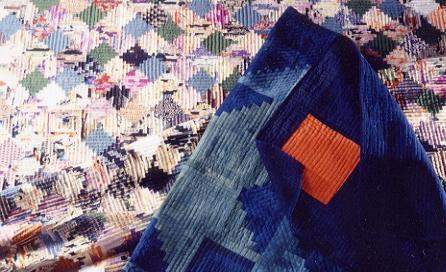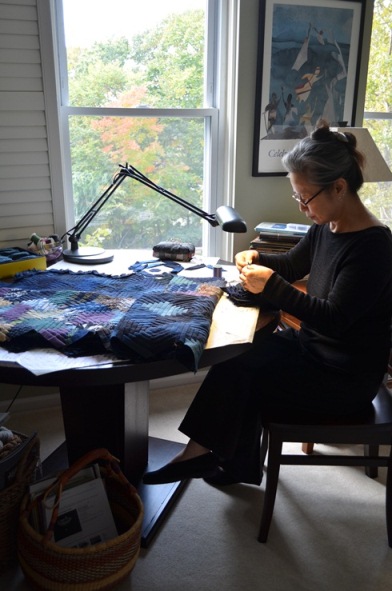
| Hokkaido Shiretoko Shari |
 |
| Noragi 2000 Tsugi |
| Traditional Textile Arts |
A Brief Statement of My Life Story: Tomie Nagano, 2014

My great grandparents were in Iwate
Prefecture and moved to Hokkaido Island about 1870. Hokkaido is the nothernmost
island in Japan and the last region to be developed in recent time.
My grandparents were born in Shari-town
in about 1877 and were the true pioneers of their time.
My father was born in 1910 in Shari-town, Hokkaido, one of nine children. He married my mother in 1939 and they lived in Shari-town their entire life. I was the youngest of five children, and was born in 1950. I built my studio on my grandparent’s property in Shari-town. I have spent nearly every day of my life for more than 25 years working on my quilts and weaving.
 |
| 2013 |
| 2003.9.10 studio |